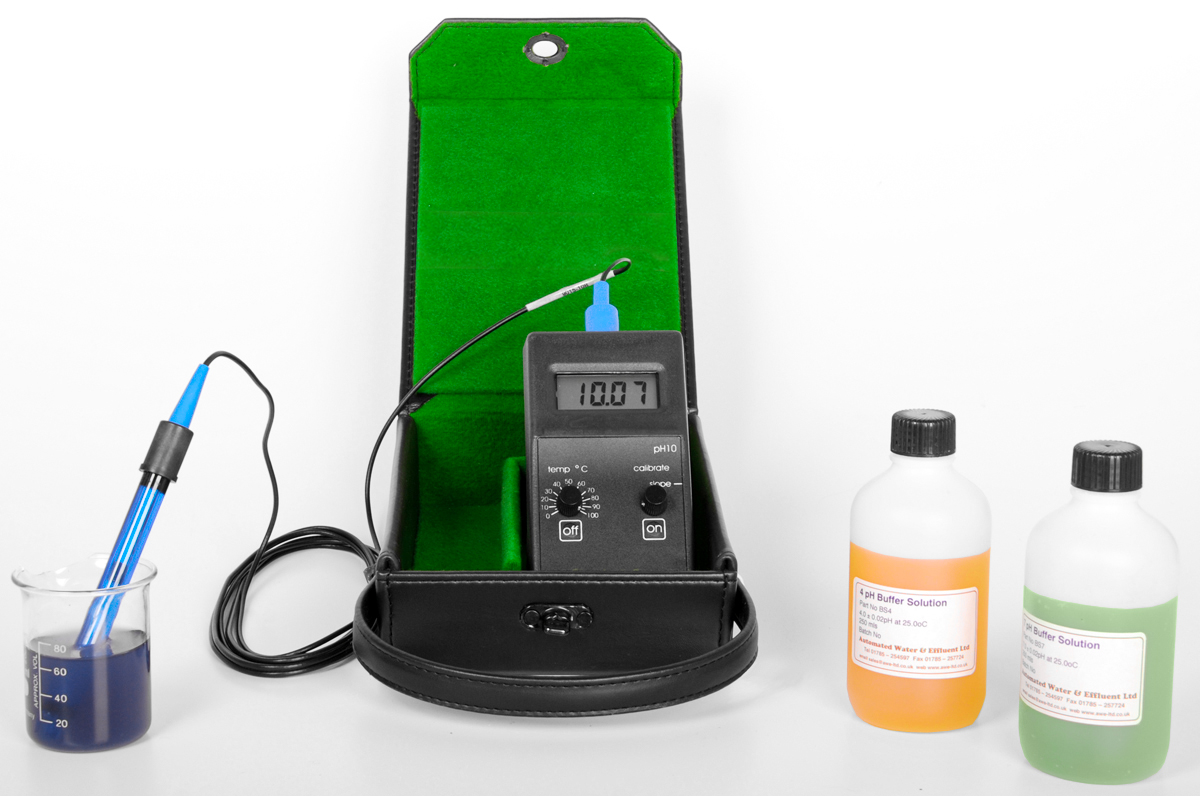
How does temperature affect the measured pH value?
Before we can define how the temperature affects the measured pH value, we need to understand what the definition of pH actually is.
What is pH?
The pH definition is based on the amount of hydrogen ions available in a solution. In fact, the first usage of the term dates back to a Danish scientist called S.P.L Sorenson. He defined the term pondus hydrogenii to express very small concentrations of Hydrogen Ions, which we now use to define pH.
The relationship between pH and Hydrogen Ion concentration is expressed as pH = - log10aH.
It's worth quickly stating that pH measurement is related to an Aqueous Solution.
An Aqueous Solution refers to a solution where the solvent is water. Solutions where the solvent isn't water can be referred to as non-aqueous solutions. These don't always carry hydrogen ions, making the measurement of pH a total non starter. A value indicative to pH can sometimes be measured if you consider the dissociative ion concentration of the solvent base, such as by measuring the base Phosphoryl Chloride concentrations in the measurement of Phosphoric Chloride. (If you are intending to measure an equivalent value to pH in non-aqueous solutions, then please get in touch by calling 01785 254 597 and we can talk you through some of your options.)
pH measurement in aqueous solutions
Water molecules are in constant motion. Because they are in constant motion, a small number of water molecules will collide and dissociate (split) to form: [H+] (Hydrogen Ions) and [OH-](Hydroxide) ions: H2O = H+ + OH-.
This is referred to as auto-dissociation of water.
As the solvent is water, aqueous solutions will always have H+ (Hydrogen) ion activity or OH- (Hydroxide) ion activity. By measuring the H+ Hydrogen Ion activity we can know if the aqueous solution is Acidic, Alkaline or Neutral.
Temperature effect on the pH value
This charts shows the mV output of a pH electode at different temperatures
The auto-dissociation activity increases as temperature increases. As such, the temperature is very important in regards to pH measurements. As the pH value changes with the change in temperature, the new measured pH value is technically the true pH value. Under laboratory conditions, a note of the temperature and pH value should be made together.
There is only one major temperature effect in pH measurement that can cause errors in readings. This is the change in the electrode's response (or sensitivity) to pH that results from a change in temperature. It is the only reasonably predictable error due to changes in temperature, and is the only temperature related factor that a pH meter with temperature compensation can correct.
This temperature error is very close to 0.003 pH/oC/pH unit away from pH7. In a perfect pH electrode, one that is zeroed at exactly pH 7, there is no temperature effect on the electrode sensitivity at pH 7, no matter how much the temperature changes.
Most pH electrodes are not perfect, but the errors from changes in temperature are still very minute when near pH 7, plus or minus one-tenth of a pH, and can be disregarded. However, the further from pH 7 the solution is and the greater the temperature changes, the greater the measurement error due to changes in the electrode's sensitivity.
These errors from changes in electrode sensitivity due to changes in temperature, can be corrected by pH controllers with temperature compensation.
Temperature Compensation for pH electrodes
There are two options for temperature compensation with pH electrodes:-
pH electrodes with automatic temperature compensation
Quite simply this is a pH electrode with a temperature sensor mounted at the tip of the pH electrode. This connects to a pH controller which works with the temperature sensor and the pH electrode to ensure that the pH value is corrected for changes in the pH electrode sensitivity.

pH controllers with manual temperature compensation
In this instance, the user enters the solution temperature manually into a pH controller. The meter then corrects the pH readings for changes in the pH electrode sensitivity.
Temperature compensation eliminates most of the temperature dependent measurement error from the electrode. Further minimisation of this error in both temperature compensating and non-temperature compensating pH meters, can be made by calibrating the pH instrument and pH electrode with the specified pH buffer solution type that is as close to the expected measurement values for pH and is at (or near) the same temperature as the solution to be measured.
We manufacture a 2.00 pH buffer solution and a 10.00pH pH buffer solution specifically for this purpose.
This technique also minimises other temperature related errors which occur in all pH electrodes but which cannot be predicted or compensated for when there are temperature changes. These unpredictable pH measurement errors, due to temperature change, are somewhat complex in nature and vary from electrode to electrode.
These errors can result in small but noticeable pH measurement errors. Unfortunately, there is not much that can be done about these, in a manner that is economical or practical for most users of pH instruments. Therefore as a practical matter, they are mostly ignored in everyday pH applications.

